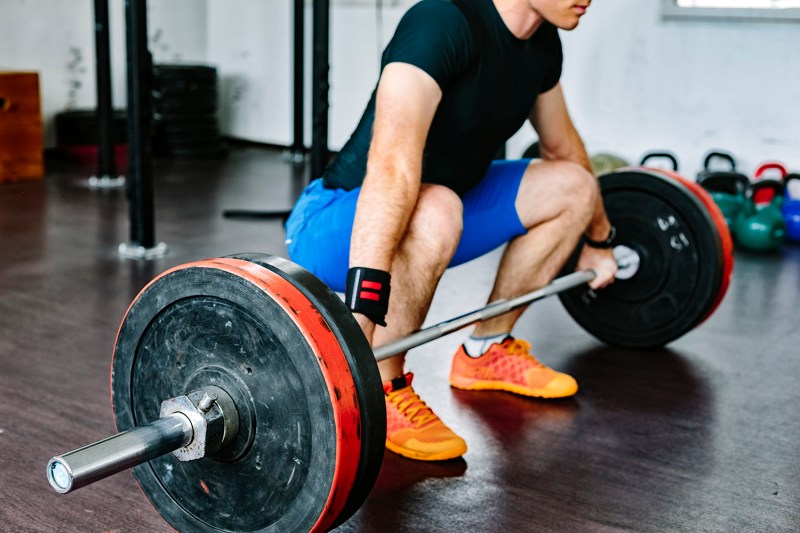
Fitness experts will be the first to tell you that you should never skip leg day. Leg exercises create a strong foundation for the rest of your rigorous fitness workouts, improve your balance, and reduce the risk of injury. Having strong legs improves your athletic ability in sports like basketball, tennis, running, and soccer and can even eliminate the lower back pain many men experience from sitting at a desk all day.
While chest workouts and arm workouts can help give you a wide and toned upper body, you can’t ignore your legs if you want to have a balanced physique and improve your overall athletic performance and metabolic rate. To help get a better understanding of the best leg exercises to try, we spoke to Hannah Eden, founder and owner of PumpFit Club in Fort Lauderdale, Florida, and former NordicTrack

Roundup of the best leg workouts
The best leg workout for men is the one that you incorporate into your weekly workout routine at least one to two times. Below, we’ve rounded up a few of the best leg exercises that will give you a strong lower body if practiced regularly. So no matter how much it hurts, remember: Never skip leg day.
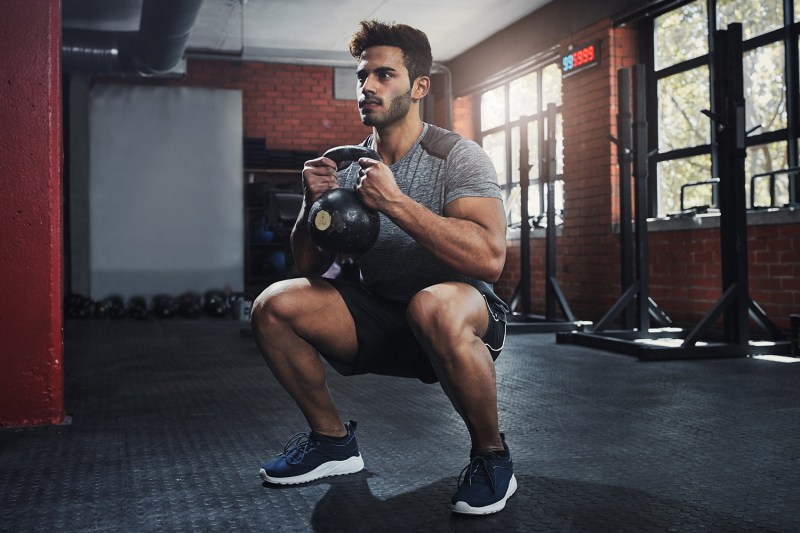
Banded goblet squats
You don’t need to lift heavy weights to get an effective lower body workout. There are plenty of at-home leg exercises for men that build quads by focusing on form and stabilization using at-home workout equipment.
“I love to incorporate resistance bands into my training because they force us to activate the target muscle groups. We often just move from point A to point B, rather than connecting mind to muscle and reaping the maximum benefits of the exercise,” Eden said.
“Find a heavy mini-band and place it around your legs just above the knees. Place your feet hip- to shoulder-width apart. Hold a kettlebell with two hands in front of your chest. Pull your shoulder blades back and together, keep your core tight, activate your glutes and hips by keeping tension on the band throughout your entire range. Keeping your weight on your heels, send your hips back and down till your hip crease passes parallel. Inhale on the way down, exhale on the effort and you extend your hips to standing.”
Good form is crucial for this exercise. Try to imagine there’s a bench behind you that’s just out of reach, and you’re trying to sit your butt down on the very edge of it.
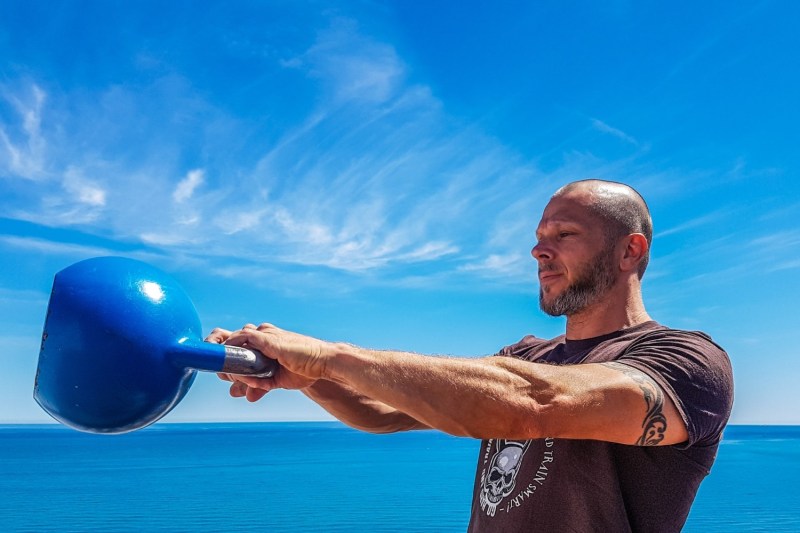
Kettlebell swing
Not only is this exercise fun, but it’s also one that gets your heart rate up and fires up your core. Kettlebell swings are one of the best home leg workouts for men. Controlling this hunk of metal activates a ton of different muscle groups and will leave you seriously breathless. If you just have time for one leg workout, this one kills a couple of birds with one stone. This exercise is a balance of control and explosion, and like all workouts, proper form is crucial if you want to avoid injury.
To start, take a stance with your legs slightly wider than your hips. Put the kettlebell about a foot and a half in front of you, hike it back, and use the momentum from swinging it between your legs to drive it until it’s level with your shoulders, engaging your core throughout this move. At the same time, stand up hard, straighten your legs, form a straight line with your body, and squeeze your glutes as if your life depends on it. Do four sets of 10-12 reps for a maximum bum burn.
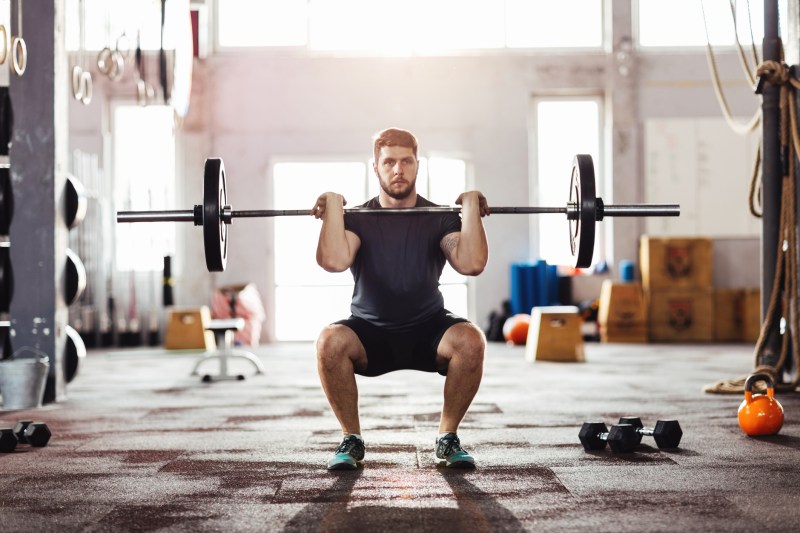
Heavy dumbbell deadlifts
Your hamstrings and glutes are part of a group of muscles called the posterior chain, and activating these muscles during your leg workout can contribute to keeping your back strong and limber. If you experience chronic back pain, this is especially important. Leg workouts for men with a pair of dumbbells are key for building a rock-solid posterior chair that will literally make you stand up taller. Here’s Eden’s recommendation.
“Grab two moderate to heavy dumbbells and place your feet under your hips. It is important to understand the difference between a hinging motion and a squat. We ‘hinge’ during a deadlift to engage the hamstrings, glutes, and lower back,” Eden explained.
Here are some cues to help improve your form and engagement: “With your feet under your hips, stand proud, and engage your core. Soften your knees and bend at the hip; send your hips back as if they are trying to reach a target, as your hips hinge back your chest will naturally come forward as your core is engaged and attached to the top of your hinge. Drive through your heels and squeeze your behind as you return to standing.”

Iso-lateral leg work
Lunges are a classic and relatively easy leg exercise that you can do without any weights or additional equipment. Also called the isolateral squat or split squat, lunges can easily be modified to be more challenging by adding dumbbells to each hand.
Start in a standing position with your legs about hip-distance apart. Take a decent step forward with your right leg and drop your left knee to the ground. Your kneeling position should show a right angle at your front knee and your back knee. Push up, driving through the right leg. Upon the return, be sure the left knee makes it all the way back to the ground (in a controlled manner).
For best form, resist the urge to lean forward to make the exercise feel easier. Stay upright on top of your lower body and chase after the difficulty. Shoulders should be held back so they are directly above your hips. Do 15 reps, switch sides, and repeat. Once you feel solid and comfortable with the movement, try holding a pair of 10- or 15-pound dumbbells to make the exercise even more difficult.
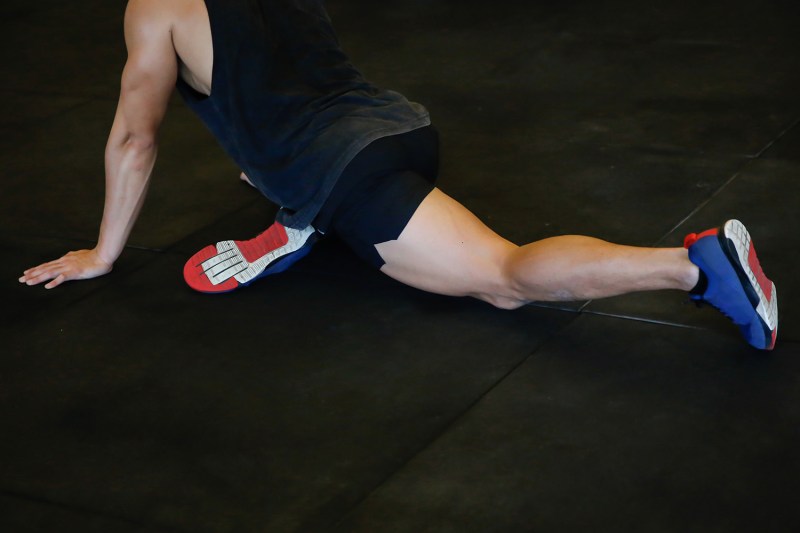
Hip openers
If you’re a regular weightlifter, you probably don’t put much stock in flexibility, but let me try to convince you. Olympic weightlifters and elite cross-fit athletes know the importance of flexibility if they want to have mobile joints in order to maximize their power. Building healthy hip mobility will be the best thing for building the form (and function) of that posterior chain we mentioned earlier. Simply put, flexibility and strength go hand-in-hand.
Maximize your hip mobility with the crouch-hold pigeon stretch. If you practice yoga, you already know how good this one feels. Basically, you get down on all fours and drop your arms so you’re resting on your elbows. Cross your right foot under your left side, so your right foot is resting beneath your hips, and stretch your left leg out behind you. Where you feel is what’s most important; under the glutes of that leg bent under you is where the stretch should be. (Does that look like a pigeon? Yeah, we didn’t think so either, but the stretching does wonders.) Switch leg positions and try it again.
Build these leg blasters into your regular routine and we’ll have you ready for those short shorts by the time spring rolls around again. And don’t forget your arms.

FAQs
Do leg workouts help you lose weight?
A leg workout can help you lose weight. Increased leg strength does burn calories, which can aid in fat loss if that’s what you’re looking to get out of your workouts, but the right exercises can also build strong, powerful tree-trunk-like legs that increase your overall athletic performance inside and outside the gym. Lifting heavy weights can help you build muscle mass (known as hypertrophy training).
Whether you’re skiing, biking, or doing the horizontal mambo, the additional power and stamina you’ll develop from a solid leg routine provide better control and protection against injury. The more work you do now will also help your legs retain muscle volume later in life.
What are the benefits of leg exercises?
Let’s delve into why incorporating leg workouts, such as those above, into your routine is key to unlocking a healthier and stronger you. These are just a few of the benefits of leg exercises, as there are so many.
Boost metabolism and burn calories
Engaging large muscle groups like those in your legs burns more calories, even at rest. This helps you maintain a healthy weight and torch fat more effectively, especially during HIIT workouts.
Improve athletic performance
Strong legs are the foundation for all athletic endeavors. Whether you’re running, jumping, kicking, or changing direction, powerful legs enhance your agility, speed, and explosiveness, taking your performance to the next level.
Protect your joints
Strong leg muscles support and protect your knees, ankles, and hips from injury. This is especially important for activities like running, jumping, and sports that put stress on your lower body.
Shape your lower body
Want toned legs and a sculpted booty? Leg exercises are your best friends! By targeting specific muscle groups, you can achieve the definition and shape you desire, boosting your confidence and body image.



